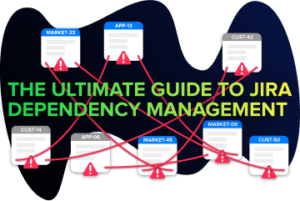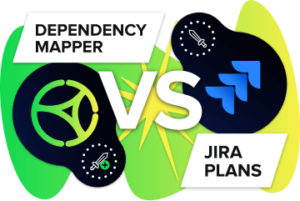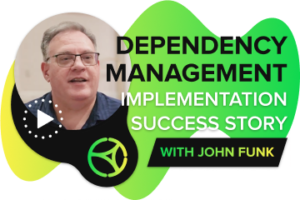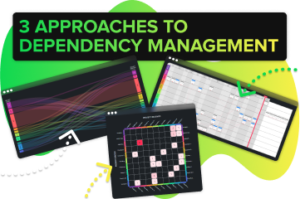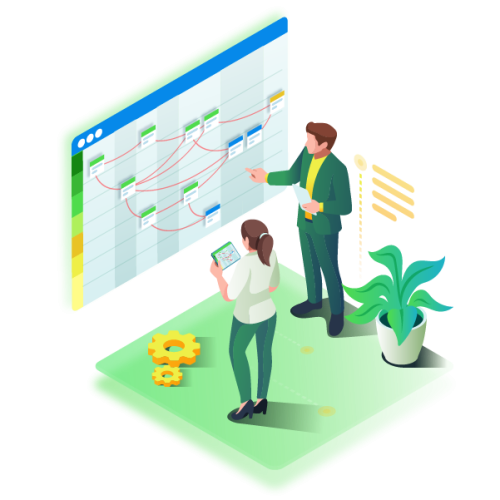
In today’s landscape, organisations strive for Agile success to deliver value, adapt to market demands, and foster innovation. At Quirk, our Agile master understand the challenges and complexities of implementing Agile methodologies. There is no one-size-fits-all approach to Agile, and that’s precisely why it is so effective. In this blog, we will talk about what Agile brings to the table, and the key performance indicators (KPIs) that can help you gauge the true impact of your Agile success.
Table of Contents
ToggleThe Advantages of Agile
At its core, Agile is an iterative and incremental approach, bringing along a host of advantages for organisations to lean into. We will take a look at some of these key advantages:
Flexibility and Adaptability
One of the primary advantages of Agile methodology is its inherent flexibility and adaptability. Traditional project management often struggles to accommodate changing requirements or market dynamics. Agile, on the other hand, embraces change as a natural part of the process. By breaking projects into manageable iterations, teams can quickly respond to feedback, pivot strategies, and adjust priorities. This flexibility ensures that the final product aligns with the evolving needs and expectations of customers and stakeholders.
Faster Time-to-Market
Time is money. Agile methodology excels in accelerating time-to-market. By breaking projects into smaller, manageable increments known as sprints, Agile coach enables teams to deliver tangible value early and frequently. This iterative approach allows organisations to gather feedback, make necessary improvements, and adapt their strategies along the way. As a result, products and features can be released to the market much faster, hence helping organisations gain ground and have an edge over the competition.
Improved Quality
Quality is integral to the Agile methodology. Unlike traditional approaches, where testing and quality assurance often occur at the end of the project, Agile focuses on quality throughout the entire development process. Each iteration undergoes rigorous testing and feedback loops, ensuring that defects are identified and addressed early on. By continuously integrating quality assurance practices, Agile teams can deliver a high-quality product that meets or exceeds customer expectations. This focus on quality not only enhances customer satisfaction but also reduces rework and costs in the long haul.
Consequently, embracing the Agile methodology also minimises project failure. Working in small sprints and focusing on continuous delivery means that even if a specific approach fails, there is always something salvageable for future use.
Continuous Improvement
Agile methodology fosters a culture of continuous improvement by placing immense emphasis on the virtues of self-reflection, which forms part of the 4 values and 12 core principles of the Agile Manifesto. Through regular retrospective meetings, teams reflect on their processes, identify areas for enhancement, and implement necessary changes. This iterative feedback loop empowers teams to learn, grow, and optimise their performance. By embracing a mindset of continuous improvement, organisations can drive innovation, increase efficiency, and adapt their practices to deliver even greater value to customers.
Superior Metrics
As opposed to metrics that drive the traditional Waterfall Methodology, Agile focuses on metrics that produce results and optimise performance. Metrics such as lead time, cycle time, and throughput help gauge team performance, identify hurdles, and make data-driven decisions to correct them. With the aid of these metrics, the Agile framework can make sweeping changes to an organisation’s output and help them avoid the perils of excess costs and scope creep. Scope creep refers to going off-track due to the sudden inclusion of new details and/or features, which ultimately hinder the process owing to the scope of the project being tinkered with. This is actually quite common, but robust task management, established with the help of Agile, can help mitigate this.
Agile KPIs: How to Measure Agile Success?
Success in the context of Agile can be multifaceted and goes beyond traditional project metrics. There are, however, some key Agile KPI metrics that are fundamental to all manner of evaluation. Let’s delve right into them:
Customer Satisfaction
The customer is always right, as the time-tested adage goes. Customer satisfaction illustrates how well the Agile team is meeting customer expectations and delivering value. KPIs in this area can include customer surveys, Net Promoter Score (NPS), or direct feedback. Regularly assessing customer satisfaction helps identify areas for improvement and ensures that the team(s) remains focused on delivering products that genuinely satisfy customer needs and have them coming back for more.
On-Time Delivery
Agile projects focus on delivering increments of value within short iterations, known as sprints. On-time delivery measures the team’s ability to meet the commitments made during each sprint. Agile project management KPIs such as sprint burndown charts or velocity trends help track progress and ensure that the team is consistently meeting their sprint goals. Monitoring on-time delivery enables timely feedback, adjustments to priorities, and enhances project predictability.
Product Quality
Maintaining high product quality is a critical aspect of the Agile methodology. KPIs related to product quality can include defect density, customer-reported issues, or the number of escaped defects. These metrics help identify areas for improvement in the development process and ensure that the delivered product meets or exceeds quality expectations. Tracking product quality KPIs lead to better customer satisfaction, reduced rework, and improved customer loyalty.
Business Objective
Aligning Agile projects with business objectives is essential for measuring success. KPIs related to business objectives can vary depending on the organisation but may include metrics such as revenue generated, cost savings, or customer acquisition. By aligning Agile initiatives with strategic goals, organisations can ensure that projects deliver tangible business value and contribute to overall success.
Productivity
Productivity metrics in Agile projects focus on how efficiently the team utilises resources to deliver value. Key indicators can include cycle time, throughput, or lead time. These metrics help assess the team’s efficiency in completing work items and identify bottlenecks or areas for improvement. Monitoring productivity KPIs facilitate better resource allocation, capacity planning, and overall project optimisation.
Process Development
Agile places massive emphasis on continuous process improvement. KPIs related to process development can include the number of process improvements implemented, the percentage of user stories meeting the definition of done, or the team’s adherence to Agile ceremonies. These metrics enable teams to track their progress in adopting Agile practices, identifying areas for improvement, and fostering a culture of continuous learning and growth.
Project Visibility
KPIs related to project visibility can include the availability and accuracy of project data, stakeholder engagement, or the use of visual management techniques. These metrics help ensure that project progress, risks, and dependencies are transparent to all stakeholders, facilitating effective communication, collaboration, and informed decision-making.
Conclusion
Agile offers tons of benefits to organisations where cross-functioning teams rely on each other to move the proverbial needle. Fancy an Agile transformation of your own? Kick things off with Quirk. With a wealth of experience from our Agile coaches spanning various sectors and coupled with access to our top-tier apps, we excel in crafting distinctive Agile solutions. These solutions are designed to navigate through challenges seamlessly, allowing your organisation to take the lead and embrace efficiency in a swift and effective manner. We support you throughout the process and beyond your first Agile deployment, providing continued assistance to ensure long-term success. Get in touch with us to understand how Agile can transform the way your organisation functions and pave its own way to success.
Frequently Asked Questions
The traditional Waterfall model follows a sequential, linear approach, where each phase of the project is completed before moving on to the next. Agile, on the other hand, is an iterative and incremental approach where projects are divided into small, manageable iterations called sprints. Agile allows for flexibility and adaptability, while Waterfall is more rigid and requires detailed planning upfront.
Some of the most popular Agile methodologies include Scrum, Kanban, Lean, Extreme Programming (XP), and Crystal. Each methodology has its own set of principles and practices, but they all prioritise collaboration, flexibility, and continuous improvement.
The 12 principles of the Agile Manifesto are as follows:
- Customer satisfaction through early and continuous delivery of valuable software.
- Be open to changing requirements, even late in development.
- Deliver working software frequently, with a preference for shorter timescales.
- Business and development teams must work together daily throughout the project.
- Build projects around motivated individuals and give them the environment and support they need.
- The most efficient and effective method of conveying information is face-to-face conversation.
- Working software is the primary measure of progress.
- Agile processes promote sustainable development. The sponsors, developers, and users should be able to maintain a constant pace indefinitely.
- Continuous attention to technical excellence and good design enhances agility.
- Simplicity is essential.
- The best architectures, requirements, and designs emerge from self-organising teams.
- At regular intervals, the team reflects on how to become more effective and adjusts accordingly.
Some key factors for the successful implementation of Agile include:
- Strong leadership support and buy-in from all stakeholders.
- Clear communication and collaboration within the team.
- Regular and active involvement of the customer or product owner.
- Proper training and understanding of Agile principles and methodologies.
- Adaptability and willingness to embrace change.
- Empowered and self-organising teams.
- Continuous learning and improvement.
Agile Lifecycle Management (ALM) is a comprehensive process that integrates various Agile methodologies to manage and streamline the entire lifecycle of a project. It encompasses planning, development, testing, deployment, and ongoing maintenance. ALM is designed to enhance collaboration among cross-functional teams, improve communication, and increase overall efficiency in delivering high-quality products or services. This approach allows for flexibility and adaptability, enabling teams to respond to changing requirements and customer feedback throughout the project lifecycle. ALM frameworks often include tools and practices to support Agile principles, ensuring a cohesive and iterative approach to project management.

